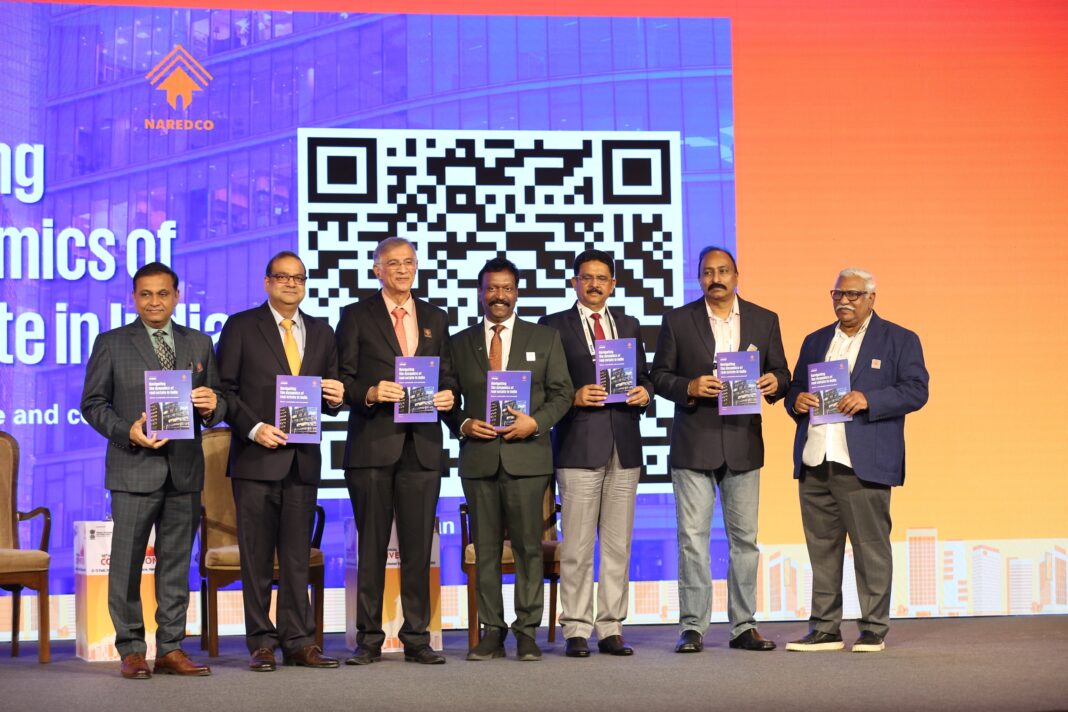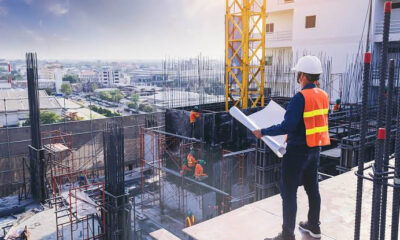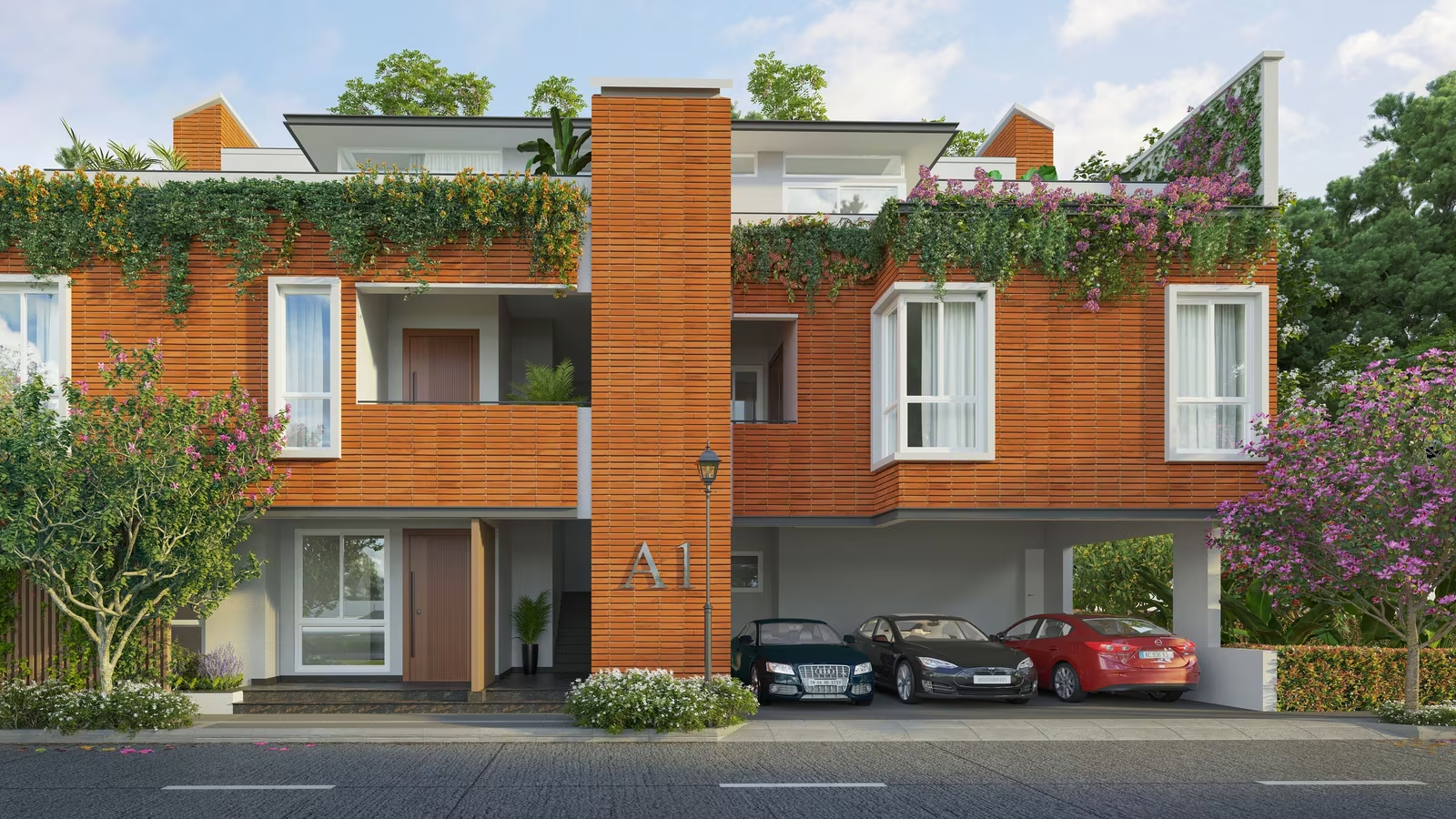News
Smart, sustainable and connected Real Estate key to India’s Future Growth, suggests KPMG in India-NAREDCO Report


New Delhi, February 2, 2024: In recent years, India’s real estate sector has demonstrated remarkable resilience, poised for a compounded annual growth rate (CAGR) of 18.7 per cent from 2020 to 2030. The trajectory, moving from USD180 billion in 2020 to a projected market size of USD1 trillion by 2030, is fueled by government initiatives, technological integration, sustainability measures and increased investments. One of the most significant trends shaping India’s real estate landscape is the increasing focus on sustainability and technology. Sustainability is influencing green construction practices and energy-efficient designs, while technology is revolutionising aspects such as smart homes and data-driven insights. These trends are enabling developers to create more efficient and cost-effective building designs, while also providing buyers with a more immersive and interactive experience.
India’s real estate sector is experiencing a significant upswing, driven by strong demand in both the residential and commercial segments. The implementation of affordable housing schemes and investor-friendly policies has fueled growth in the housing market, while the emergence of flexible workspaces reflects the evolving requirements of modern businesses. However, the sector does face certain challenges, including the need to attract and retain investors, secure adequate funding, develop robust infrastructure and address the skill gap. Overcoming these challenges is crucial to sustaining the sector’s momentum, necessitating substantial investments, innovative financing solutions, improved infrastructure and a skilled workforce.
Delving deeper into this sector, KPMG in India in association with NAREDCO today released a thought leadership report titled ‘Navigating the dynamics of real estate in India – Smart, sustainable and connected ’ at NAREDCO’s 16th National Convention. The report encapsulates the multifaceted themes driving the sector and provides a comprehensive view of the current landscape and aims to initiate meaningful conversations among stakeholders. It intends to catalyze informed dialogue, fostering a deeper understanding of the opportunities and transformative trends shaping the sector.
Key highlights from the report include:
• Surge in domestic and foreign investments
The influx of innumerable players into India’s real estate market through joint ventures and direct investment is bringing in capital, expertise and technology. According to the High-Powered Expert Committee (HPEC), investment in urban infrastructure is projected to increase from 0.7 per cent of GDP in 2011-12 to 1.1 per cent by 2031-32. The sector has witnessed significant private equity (PE) investments in recent years, driven by attractive returns. Investments are expected to reach USD59.7 billion by 2047. The sector’s investment potential is promising due to increased government support, sustainability and the integration of advanced technologies. Changing business dynamics are also creating new opportunities in the sector, which may attract further investments.
• Emergence of Tier II and III cities
India’s real estate sector is witnessing the rise of Tier II and III cities, such as Surat, Bhubaneshwar, Coimbatore, Vadodara, Indore, Chandigarh, Kochi and Visakhapatnam, as significant contributors. These cities have demonstrated remarkable economic growth, improved connectivity and enhancement in infrastructure. Renowned for their attractive investment prospects, Tier II and III cities are attracting attention due to their abundant talent pool and affordability, making them appealing to both startups and established corporations, as well as industrial entities.
• Transformative potential of technology in the sector
In the dynamic landscape of India’s real estate sector, the transformative impact of technology is reshaping traditional paradigms. It becomes imperative to dissect the multifaceted ways in which technological advancements are not only augmenting but also redefining the sector. The Indian real estate sector has witnessed a surge in proptech startups, focusing on innovative solutions, such as AI-driven analytics, blockchain-based transaction platforms and others. Increasing interest from venture capital firms in proptech startups also indicates growing confidence in the potential of technology integration in the sector. Cities such as Bengaluru and Hyderabad have become hubs for proptech innovation, hosting a burgeoning community of startups and technology firms that are revolutionising the real estate landscape.
• Embracing sustainability and building a green future
India’s real estate sector is witnessing a significant shift towards sustainability, with a remarkable 82 per cent of new Grade A office supply as of September 2023 being green certified. The industry is increasingly adopting renewable energy sources, particularly solar power, in alignment with India’s ambitious goals for a cleaner and more sustainable energy mix. Construction and maintenance practices now integrate circular economy principles, promoting the reuse and recycling of materials. Sustainability measures are implemented throughout the entire value chain, bolstered by government initiatives such as the Green Rating for Integrated Habitat Assessment (GRIHA) and tax incentives that encourage developers to embrace sustainable design.
Noteworthy findings also include:
• Institutional investments have experienced a remarkable surge, registering a 37 per cent year-on-year increase in the first quarter of 2023.
• Proptech start-ups secured a substantial USD 2.4 billion in investments between January 2021 and March 2023.
• The flexible office space stock in India is anticipated to surpass 80 million sq. ft. by the end of 2025, a significant increase from the current stock of approximately 47 million sq. ft. As of 1H2022, Bengaluru dominated India’s flexible space stock with around 14.6 million sq. ft., followed by Delhi NCR, Hyderabad, Pune and Mumbai.
• The escalating demand for larger homes with premium amenities and supporting infrastructure, particularly in the technology-driven cities of Pune, Chennai, Bengaluru and Hyderabad, is propelling the demand for the premium segment in the residential space.
• The real estate investment trusts (REITs) have seen an increase in investment in office spaces, highlighting the developers’ strategy towards unlocking capital to expand portfolio, therefore contributing to urban development.


G Hari Babu, National President of NAREDCO, said “At NAREDCO, we proudly highlight India’s real estate evolution driven by RERA, REIT, and GST. Envisaged at USD 1,000 billion by 2030, our sector fuels economic growth. Despite challenges, we’re committed to infrastructure development. In a dynamic landscape, increased investments and global players signal positive growth. Anticipated urban growth and Tier-II/III potential offer promising opportunities for the future.”In Amrit kaal’s real estate, a surge in investments and international players marks a positive trajectory. Acknowledging the sector’s vital contributions adds credibility. The forecasted urban infrastructure growth and potential in Tier-II and III cities highlight our industry’s crucial role in Atmanirbhar Bharat, promising a bright future.” added Mr Hari Babu.


Neeraj Bansal Partner – Risk Advisory & Co-Head and COO – India Global, KPMG in India, said “The real estate sector currently contributes 7.3 per cent to our GDP and is projected to become a trillion-dollar market by 2030. This growth will be fueled by integrating technology across the value chain, with total investments collected by proptech startups worth USD2.4 billion between January 2021 and March 2023. Along with this, areas such as the fractional ownership market and flexible office space are expected to surge by 2025, with USD8.9 billion and about 80 million sq. ft. respectively. The sector growth is expected to remain high over the next two decades, with PE investments to reach USD59.7 billion by 2047. The sector currently contributes about 39 per cent of emissions and is set towards its decarbonisation journey. India currently ranks 3rd in terms of LEED-certified green buildings and over 80 per cent of new grade A offices are green-certified. The sector’s focus on sustainability, technology integration and innovation will enable it to stay ahead of the curve, delivering exceptional value to customers and contributing to a greener future.”
Way forward
• Technology Adoption – Embrace emerging technologies such as Building Information Modeling (BIM), IoT, AI, among others, to enhance operational efficiency, streamline processes and stay at the forefront of innovation.
• Sustainability Integration – Prioritise sustainable construction practices by incorporating green building designs and utilising renewable energy sources to align with global environmental goals.
• Public-Private Partnerships (PPPs) – Foster collaboration between government bodies and private enterprises to address infrastructural challenges, streamline regulatory processes and encourage sustainable development.
• Upskilling Programmes – Collaborate with educational institutions and industry bodies to establish upskilling programmes for professionals in the real estate sector, ensuring a skilled workforce capable of navigating evolving demands.
• Digital Collaboration Platforms – Implement digital collaboration tools and platforms to streamline communication among stakeholders, foster transparency and reduce transactional complexities.
• Inclusive Development Projects – Prioritise inclusive development projects that contribute to social and economic well-being, creating spaces that cater to diverse needs and demographics.
-



 News4 weeks ago
News4 weeks agoKW Delhi 6 Mall Onboards New Brands
-



 News4 weeks ago
News4 weeks agoManasum Senior Living Launches IKIGAI GOA, A Senior Living Community in North Goa, in collaboration with Prescon Homes
-



 News4 weeks ago
News4 weeks agoBridging India Divide: Top 5 Tier- 2 Cities to Focus On
-



 News4 weeks ago
News4 weeks agoCommercial Realty Gets Tech Savvy: Fast Construction, Enhanced Convenience
-



 News3 weeks ago
News3 weeks agoGodrej Properties Sells Rs 3k cr+ Homes of Godrej Zenith, Gurugram, within 3 days
-



 News4 weeks ago
News4 weeks agoMultipoint Connection – A Definite Boon
-



 News3 weeks ago
News3 weeks agoRBI’s Status Quo on Key Policy Rates to Help Maintain the Real Estate Growth Momentum, Say Industry Stalwarts
-



 News2 weeks ago
News2 weeks agoOlive Announces Dhruv Kalro as Co-Founder
















